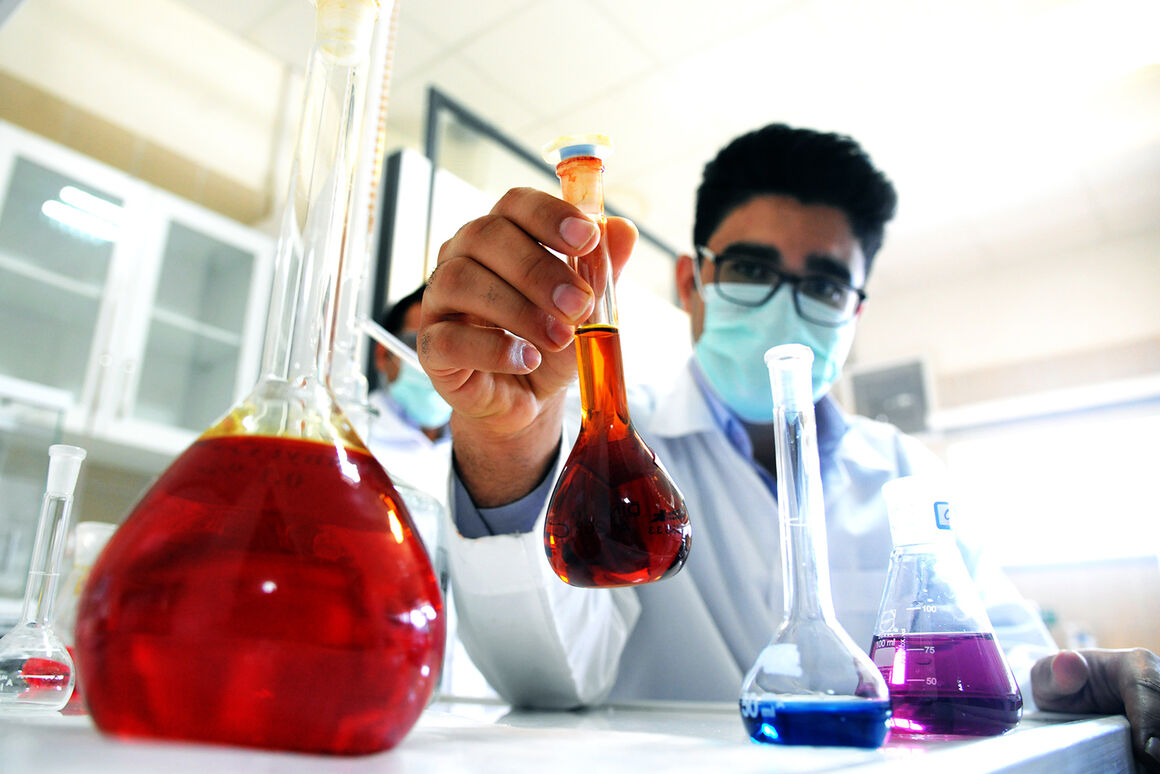Due to sanctions targeting catalysts used in the petrochemical industry, petrochemical experts have realized that production of this group of substances is a must for consumer markets. Given the region’s needs, it would be possible to take action for its marketing and exports. Therefore, through efforts made by Iranian researchers, the technical knowhow for producing petrochemical catalysts was developed. Some of them are dehydrogenation catalysts, acetic acid production catalysts, methanol-to-propylene catalyst, methanol synthesis catalyst, acetone hydrogenation, dry reforming, PZ, and SAC catalyst.
Petrochemical Research and Technology Company (PRTC), as a main hub of knowhow development, has been instrumental over recent years. Since the beginning of the current calendar year, PRTC has developed 10 catalysts. It is also expected to produce more strategic catalysts for the petrochemical industry by the end of next calendar year.
Development of technical knowhow for petrochemical production, petrochemical catalysts, and strategic chemicals as well as removal of problems are among the major objectives of PRTC.
PRTC’s infrastructure includes 10 labs, 25 pilot systems, more than 50 setup and bench systems in Tehran, Arak and Mahshahr centers. HDPE, PET and MTP demo plants belong to PRTC.
PRTC has so far registered 250 invention patents, the most recent one is PVM or MTP that was registered with the European Union.
Today, about $21.5 billion is spent annually on catalysts, $16 billion of which is in the petrochemical industry. In Iran, from about $400 million of catalyst spending, $270 million goes to the petrochemical industry.
Forty groups of catalysts are used in the petrochemical industry. Ten groups are polymer-based. Currently, altogether17 groups of catalysts have been domestically manufactured and are being used in the industry. According to planning, 16 groups would have been manufactured domestically by the end of next calendar year. Another 13 groups are under research and development. Access to them is very easy, but in some cases their production does not have economic justification.
15 Agreements with Knowledge-Based Companies
PRTC has signed 15 agreements with knowledge-based companies in order to use their potential, particularly in supplying equipment. Production and delivery of 287 tonnes of catalysts to the Sabalan Petchem Plant, launching the LL catalyst in the Lorestan Petchem Plant, delivering the ZSM-5 technical knowhow to the Behdasht chemical company and delivering dry reforming catalyst production knowhow to the Khawrazmi plant are among the major actions of PRTC. Co-precipitation catalyst production has been launched in Lorestan with a capacity of 1,500 tonnes a year.
Costly Petchem Catalyst
Shazand Petrochemical Plant is also equipping its catalyst production unit, as it has received technical knowhow for that purpose. Meantime, polyethylene starters in Kurdestan Petrochemical Plant are under construction, scheduled to come online next calendar year. Shazand plant is also testing the SAC 500 catalyst whose technical knowhow it has received.
The acetylene hydrogenation catalyst knowhow has been delivered and during the first quarter of next calendar year, 200 tonnes a year – enough to meet national needs – will be supplied. The propylene catalyst has also been prepared at the Arak center of PRTC, which would come online in February.
Delivering technical knowhow to Fateh Kimia for converting methanol to propylene, supplying the actuator of potassium carbonate units of the Morvarid petchem plant, supplying technical knowhow to the 310,000-tonne high-density polyethylene unit of the Bushehr Petchem Plant and supply of technical knowhow for PET to the Tondguyan Petchem Plant are among the achievements of PRTC.
Development of the petrochemical industry has a significant impact on the development of any country and the creation of wealth. Today, the demand for oil, gas and petroleum products in the world may be less than one percent per year, but in the petrochemical industry this number is 4 to 5 percent, which indicates that special attention should be paid to this industry and the intelligent development of the petrochemical industry should continue.
Chemicals and petrochemicals are worth $3,350 billion in the world, $18-20 billion of which belonging to Iran. In light of the availability of petrochemical feedstock in the world and global markets, development of this industry should continue.
9 Petchem Projects Online
A total of 17 petrochemical projects were initially planned to come online since the beginning of the current calendar year. So far, 9 of them have come online.
After all these 17 projects come online, Iran’s petrochemical production capacity would reach 90 million tonnes a year.
Iran is expected to bring its petrochemical production capacity to 100 million tonnes by the end of next calendar year. The petrochemical industry is the only industry that would meet its targets set in the 6th Five-Year Economic Development Plan.
With more than half a century since the start of the petrochemical industry, more attention is needed to be paid to sustainable, resilient and resistant development. To that end, the National Petrochemical Company (NPC) has considered new strategic projects in a bid to stop importing chemicals and petrochemicals.
Iran’s petrochemical industry has 31 strategic projects categorized under the three groups of combined feedstock, propylene production and accelerative projects.
Senior Iranian petrochemical managers are mainly concerned with the shortage of at least 3 million tonnes of propylene. Six propylene projects are envisaged in western Iran and in Assaluyeh in the south.
A group of 22 accelerative projects are aimed at supplying domestic needs, halting imports and diversifying the mix of products. Each tonne currently cost $400 to $500, which would increase to $1,500 a tonne once the accelerative projects come online. These projects are mainly compact, but of high value.
Strategic projects will totally add 22 million tonnes to Iran’s petrochemical production capacity, worth about $11 billion.
By Javad Asghari
Courtesy of Iran Petroleum


Your Comment